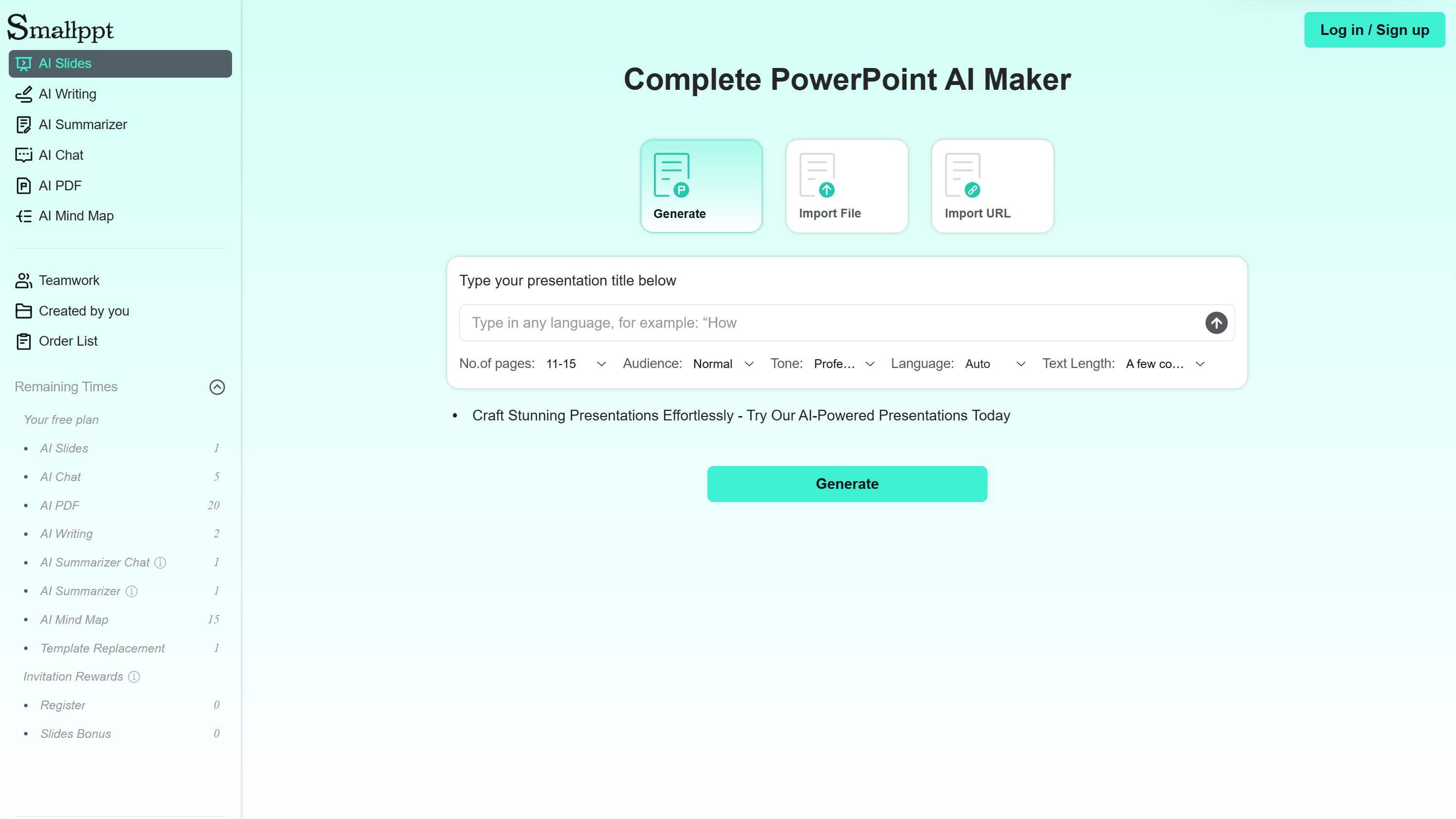
There are many types of presentations. Only by understanding these different types can you ensure your information delivery is precisely targeted. This is true whether you're reporting, training, or pitching, helping you reach your audience effectively and maximize the value of the information.
When facing different audiences and scenario needs, do you ever wonder which presentation format can make your information delivery twice as effective with half the effort?
In this blog post, we will introduce seven different types of presentations, covering their characteristics and best use cases.
7 Different Types of Presentations
1. Social Presentation
This type of presentation usually occurs in social settings. Its main purpose is to foster relationships and create a positive social atmosphere.
Examples include wedding toasts, award acceptance speeches, eulogies, and speeches at reunions. These aim to express welcome, congratulations, gratitude, or condolences.
Key characteristics: Short and concise content. The speaker's language and demeanor should be gracious. Expression is often full of emotion.
2. Instructional Presentation
This is a form of presentation where the speaker imparts specific knowledge, skills, or methods. They do this through oral explanation, physical demonstration, or showing operational steps to learners or students.
For instance, a teacher or lab technician might demonstrate experimental procedures using actual equipment. They might also use multimedia tools like slideshows, videos, audio, or animations. These present abstract concepts in a vivid way, greatly enhancing the learning experience.
3. Persuasive Presentation
Persuasive presentations aim to convince the audience to accept a viewpoint, adopt an attitude, or take a specific action. This demands not only presentation skills but also deep insight into the audience's psychology.
Examples include politicians urging public support for a policy, environmental advocates encouraging protection efforts, or salespeople persuading customers to buy a product.
Speakers usually use various strategies to strengthen their argument. These techniques include logical reasoning, presenting factual evidence, using rhetoric, citing authorities, and storytelling.
For this type of presentation, you must first firmly believe in your stance. Confidence and genuine enthusiasm for your topic make it more likely to resonate with the audience. This resonance is key to motivating them towards action.
4. Informational Presentation
This type is focused on conveying knowledge and information to the audience. Its primary goal is to help listeners understand and grasp new knowledge.
Common examples include academic lectures, corporate training sessions, classroom teaching presentations, and science popularization talks.
When delivering specialized knowledge, the speaker must ensure the information is verified. It should align with scientific principles and objective facts, and avoiding errors or misleading content is essential.
5. Entertaining Presentation
A core goal of the entertaining presentation is to let the audience listen in a lighthearted, enjoyable atmosphere. It often breaks from rigid, conventional frameworks.
It wraps information in humor, vivid performances, or creative interactions. This lets the audience receive the information while relaxed and entertained.
Examples include stand-up comedy-style talks, story-sharing sessions for fun, or sketch-like performances.
For such presentations, the speaker needs versatility with humor across different scenarios and topics. Performance skills are also crucial to boost interest and appeal. This includes effective use of body language, facial expressions, and vocal variation.
6. Motivational Presentation
This type aims to inspire the audience's inner drive. It boosts morale, increases confidence, and encourages a positive, can-do attitude.
You've probably heard such speeches. For example, For example, some schools will invite well-known scholars or outstanding graduates to return to their alma mater to give speeches. They share their experiences to encourage younger students to cherish their study time, work hard to improve themselves, and build a strong foundation for the future.
Or, successful individuals recount their rise from setbacks. They share how they overcame obstacles to achieve goals, so as to to motivate listeners to persevere and relentlessly pursue their own dreams.
When making motivational presentations, the speaker themselves should exude confidence, warmth, and energy, and use real and touching stories and positive language to infect the audience through his or her emotional expression and body language.
7. Reporting Presentation
This is a presentation where the speaker reports information to an audience. This audience is usually superiors, team members, or clients. The report covers progress, results, issues, and future plans for a task, project, or business.
Examples include project completion reports, annual performance reviews, research progress updates, thesis defenses, and presentations explaining stage results in an investigation.
The report should focus on information delivery. Presenting the relevant work details clearly and accurately is key. This ensures the audience understands the current status and the essential points.

How to Choose the Right Presentation Type
1. Clarify the Objective
The first step is to define the purpose of your presentation: is it to educate the audience, persuade them to take action, inspire motivation, or simply entertain?
2. Consider the Audience
Analyze your audience’s characteristics and needs: their background, interests, and what they expect to gain from the presentation. For instance, a technical team may prefer an in-depth, data-driven format, while general audiences might respond better to a storytelling or visual-based approach.
3. Leverage Visual Aids
When possible, incorporate slides, images, videos, or other visual tools to enhance engagement.
4. Balance Time and Resources
Factor in the available time and resources. If time is limited, opt for a concise, report-style presentation; if resources are abundant, consider a multimedia-rich format with interactive elements or live demonstrations.
5. Align with Personal Style
Choose a type that matches your communication strengths. If you excel at humor, an entertaining or interactive presentation can make your content more engaging.
Choose the Right Presentation Tool
Many tools are available on the market. Creating professional presentations can be time-consuming and energy-draining. However, AI tools like Smallppt can help you save time and simplify the process.
With tools like Smallppt, you can say goodbye to struggles with layout design and content structure. Just input your topic keywords. It then instantly generates slide templates perfectly suited to your scenario. This makes the complex creation process simple and efficient.
Why Choose Smallppt?
● Easy Operation: Simply input your theme or upload a related text document or URL. Smallppt handles the rest.
● Personalized Customization: Tailors presentations more closely to your specific needs, including details like your role or identity.
● Massive Library of Stunning Templates: Features 20 template categories. Professionally designed by expert teams, offering a vast array of choices.

These 7 different types of presentations each have distinct characteristics. Understanding these different formats helps you choose the right expression method based on your needs. This ensures your information delivery is more effective.
We hope these introductions empower you on your presentation journey. May they help you leverage your strengths, communicate precisely with your audience, and achieve your goals.


